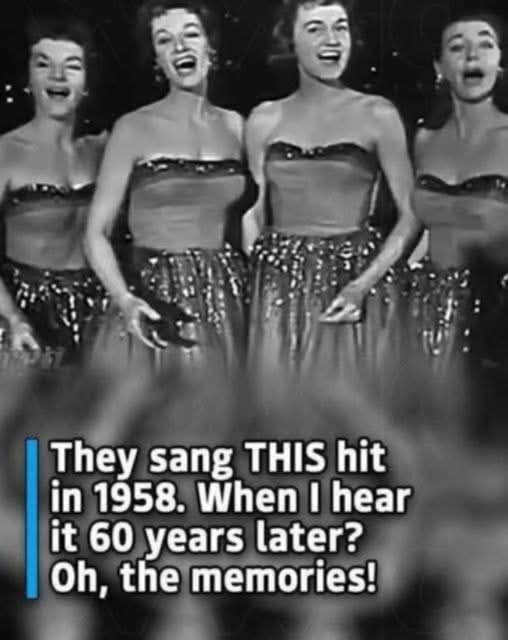They sang THIS hit in 1958, When I hear it 60 years later? Oh, the memories
It’s 1958 — a year that still glows in America’s collective memory. Eisenhower is in the White House, drive-in theaters light up the night, and teenagers dance to the hum of jukeboxes spinning rock & roll. But amid the noise and rebellion of the new era, four women from Sheboygan, Wisconsin, stepped onto the stage and captured the country’s heart in a way no electric guitar ever could.
They were The Chordettes — Janet Ertel, Alice Buschmann, Lynn Evans, and Jinny Osborn — four voices so perfectly matched they could make harmony sound like heaven itself. Where rock was wild and loud, The Chordettes were elegance in motion — graceful, confident, and utterly magnetic.






